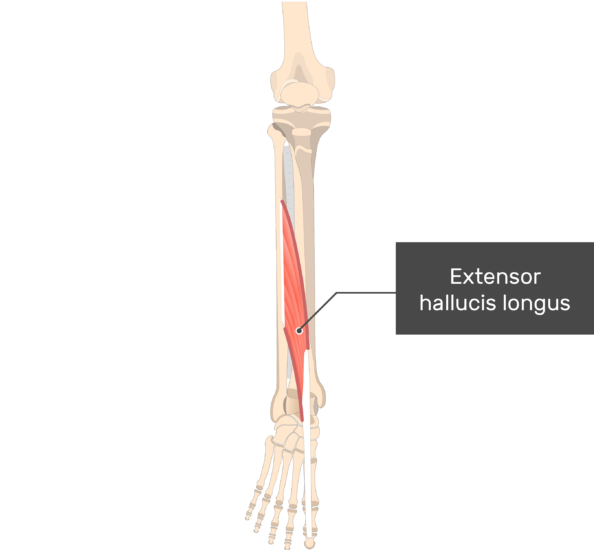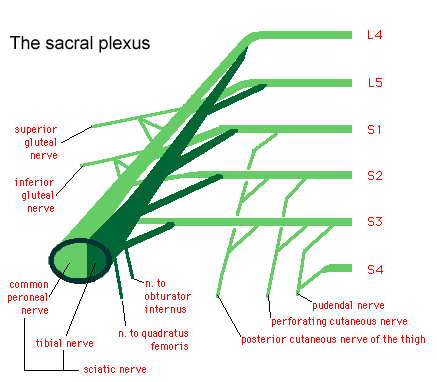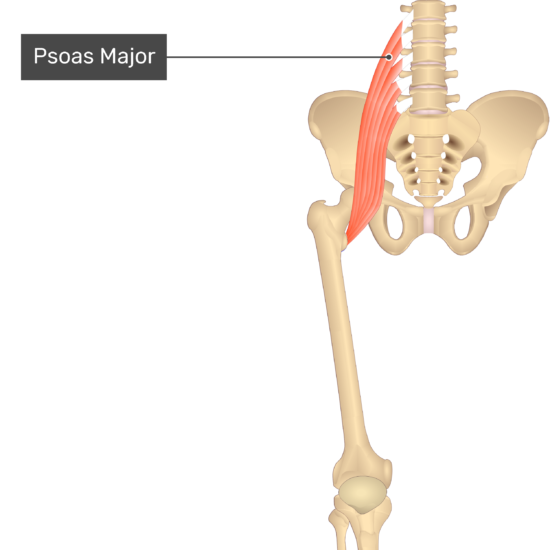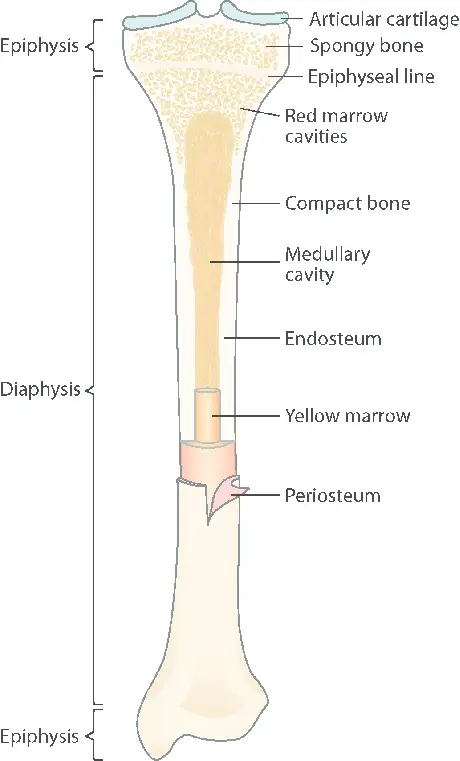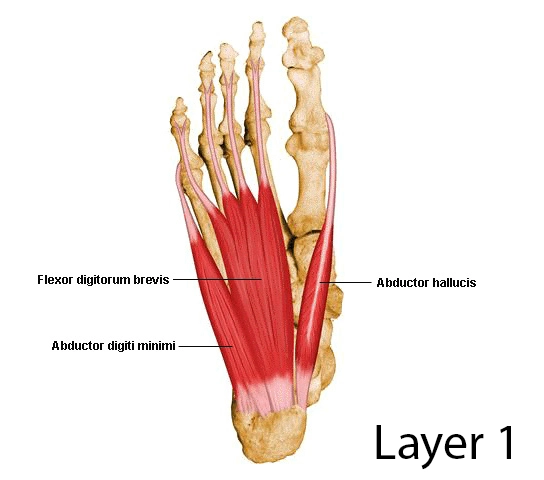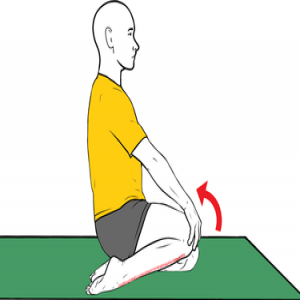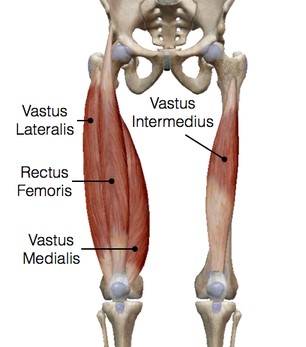Extensor hallucis longus muscle
What is Extensor hallucis longus muscle?
The extensor hallucis longus (EHL) muscle is a thin muscle that extends from the middle third of the fibula to the distal phalanx of the first toe (hallux). Along with three other muscles, the muscle is in the anterior compartment of the leg; muscles of the extensor digitorum longus, the tibialis anterior, and the fibularis tertius
Between the tibialis anterior and extensor digitorum longus muscles is the extensor hallucis longus. The muscle moves in joints three feet apart; interphalangeal, metatarsophalangeal, and talocrural joints. The extensor hallucis longus is primarily responsible for extending the first toe, but it also serves as an accessory joint muscle.
Origin
From the middle two-quarters of the fibula’s anterior surface and the interosseous membrane that is next to it.
Insertion
Before inserting at the base of the big toe’s distal phalanx, EHL enters the extensor retinaculum from the deep.
Relations
The extensor hallucis longus (EHL) muscle is situated between the extensor digitorum longus muscle and the tibialis anterior muscle posterolaterally. Between the extensor hallucis longus and tibialis anterior muscles are the anterior tibial artery, vein, and deep peroneal nerve.
The extensor digitorum longus ligament is connected medially to the ligament of the muscle in the dorsum of the foot. The dorsal pedal artery pulse is easily palpable between those two tendons.
The tendon of the extensor hallucis muscle can be seen laterally to the tendon of a tibialis anterior muscle on the dorsal aspect of the big toe when the extensor hallucis extends the toe. An important clinical location is a space between these two tendons; It is the entryway into the ankle joint for aspiration or injection procedures.
Innervation
The deep fibular nerve innervates the extensor hallucis longus (root values L5 and S1).
Blood supply
The blood supply for extensor hallucis longus mostly comes from the front tibial course and its branches. Additionally, the branches of the fibular artery can supply the muscle.
The anterior tibial vein, which empties into the popliteal vein, drains the majority of the venous blood from this compartment.
Function
The extensor hallucis longus muscle’s primary function is the extension of the big toe (hallux), as the name suggests. The hallux’s metatarsophalangeal and interphalangeal joints are both affected by this action. When walking or running, this extension is an essential movement.
The extensor hallucis longus (EHL) muscle dorsiflexes the foot in the lower leg joint with other muscles from the anterior compartment of the leg. At the point when the foot is fixed on the floor (for example walking or doing squats), the muscle pulls the body somewhat forward and controls losing gravity and falling backward.
Clinical relations
Extensor hallucis longus pain
Extensor hallucis longus pain refers to discomfort, tenderness, or soreness experienced in the muscle or tendon that runs along the top of the foot and is responsible for extending the big toe. This type of pain can be caused by various factors such as overuse, injury, or medical conditions like tendinitis or stress fractures. Treatment options include rest, ice, compression, elevation, physical therapy, and pain medication. Seeking medical attention is recommended for persistent or severe pain.
Effect of Weakness
Extension at the metatarsophalangeal and interphalangeal joints is reduced by extensor hallucis longus (EHL) weakness. A decreased dorsiflexion of the great toe is a sign of extensor hallucis longus (EHL) weakness because it is the only muscle responsible for the extension of the interphalangeal joint.
The heel of the foot makes the first contact with the ground during normal locomotion. The ground response force applies a plantarflexion second to the entire foot, which is opposed by all of the dorsiflexors. At the point when the extensor hallucis longus (EHL) is weak, an individual’s capacity to control the drop of the medial region of the foot, particularly the main toe, is diminished.
Additionally, patients with extensor hallucis longus weakness report that when they pull on socks or shoes, the toe tends to fold under the foot, which can lead to tripping.
Effect of Tightness
As with the fingers and thumb, the metatarsophalangeal joint of the great toe is pulled into extension when the extensor hallucis longus (EHL) is tight, resulting in flexion at the interphalangeal joint and a claw toe deformity.
Hyperextension of the extraordinary toe pulls the plantar plate distally, uncovering the metatarsal head to exorbitant loads and creating aches. In a similar manner, hyperextension of the metatarsophalangeal joint forces the interphalangeal joint into the shoe’s toe box, resulting in pain and calluses—also known as corns—on the interphalangeal joint’s dorsal surface.
Claw Deformities of the toes
In a foot with sensation, claw toe deformities are extremely painful. As a result of increased pressure between the dorsal surfaces of the toes and the shoe and under the heads of the metatarsals, claw deformities in a foot that lacks sensation put the person at risk of skin breakdown.
Trigger point referral
The term “EHL” extensor hallucis longus refers to pain in the dorsum of the foot as well as the distal aspect of the first metatarsal and great toe. It might extend up the leg to the point. These points are just anterior to the bula, just distal to the junction of the middle and distal thirds of the leg. The patient may likewise complain of persistent dorsal foot ache.
Extensor hallucis longus muscle stretching
Standing Shin Stretch
Stand erect. For balance, you need to use a hand on a wall or other support.
Bend both knees slightly.
The right foot is still firmly planted on the ground. The left foot ought to be set simply behind the steady right foot, with the toe of the left foot contacting the ground, or the foot ought to be extended.
Keeping your toe immovably on the ground, pull the left leg forward so you feel a stretch from the highest point of your left foot through the shins.
Hold the stretch for 10 to 30 seconds when you feel it.
Using the right foot, repeat the stretch.

Japanese sit stretch
The dorsiflexors in the ankle are the focus of this plantar flexion stretch. Begin by setting a yoga block behind you. Place the tops of your feet on the yoga block and return to your heels while starting in a kneeling position. The stretch will be felt along your front shin and ankle.
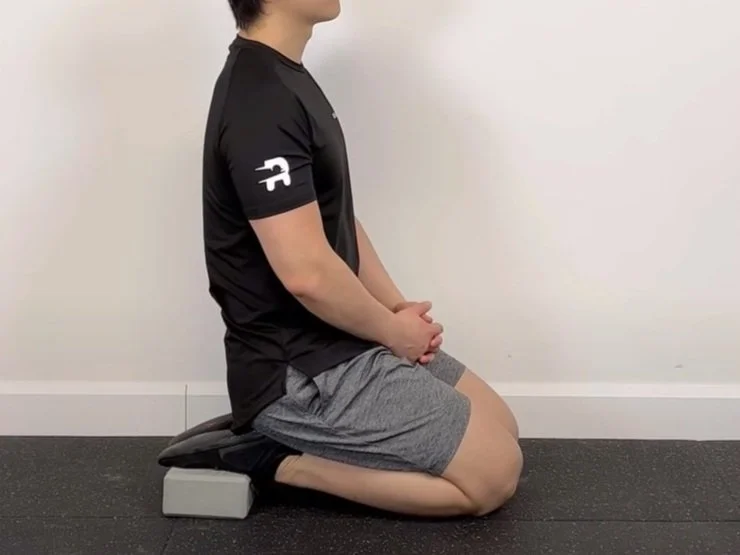
Extensor hallucis longus muscle strengthening exercise
Banded great toe raises
This is a boosting exercise for the dorsiflexors or extensors of the first toe. Anchor the other end of a band below your other foot by looping it around the big toe. Raise the first toe off of the floor as high as could be expected and hold for as long as 5 seconds before gradually dropping it back down.

Isometric great toe extension
The big toe extensor muscles are strengthened with this isometric exercise. To get started, give the big toe resistance by using the opposite heel. Hold the position for 5 to 7 seconds by pushing your big toe into the heel as hard as you can.
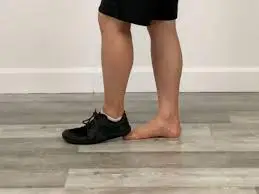
Yoga toes
To distinguish Great Toe control from the 2nd to 5th digits, this is a dissociation exercise. This exercise can be finished while standing, sitting, weight-bearing, or non-weight bearing. Lift both your big toe and your other toes at the same time, but not both at the same time.
Toe piano
This is a motor control exercise for toe extensions. To begin, lift all of your toes off the ground. The next step is to gradually lower each toe down, starting with the pinky toe.
Slant board toe raises
The ankle dorsiflexors are strengthened in this exercise. Set up a slant board 4-6 inches from the wall to get started. Put the grade of the inclination board to around 30-40 degrees. While supporting your pelvis against the wall, stand on the slant board. Continue to raise your toes off of the inclination board to the furthest extent that you would be able and hold for as long as 5 seconds. To complete the exercise, slowly lower the forefoot back down to the surface of the slant board.
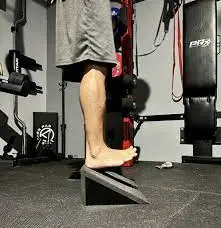
Dumbbell toe raises
The ankle dorsiflexors are strengthened in this exercise. Begin by sitting on a bench and letting your foot hang over the edge. Using an exercise band or Velcro strap, loop and tie a dumbbell to the bottom of your foot. Dorsiflex the foot, bringing the toes toward the shins, and slowly allow the weight to pull your foot into plantar flexion.
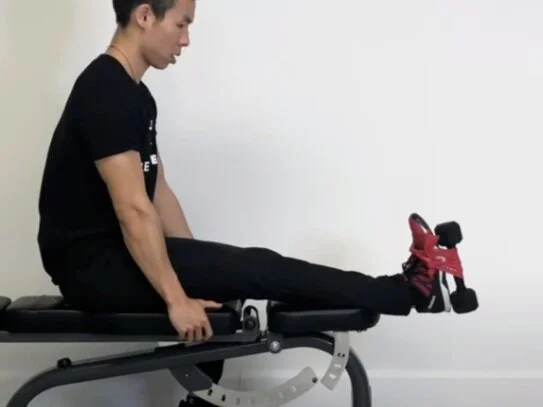
Wall lean toe raises (wide and bent over)
The ankle dorsiflexors are strengthened in this exercise. Begin by leaning against a wall with your hips bent and both feet pointing in front of you with their heels on the ground. Pull your foot into maximum range dorsiflexion (toes toward the shins) and lower it back to the floor to finish the exercise. The knees could be bent.
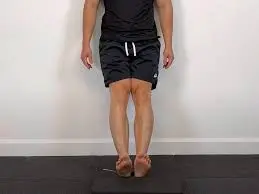
Banded toe raises
The ankle dorsiflexors are strengthened in this exercise. Begin by circling a band around your forefoot with the opposite end secured to a steady item like a squat rack or couch. Pull your foot into maximum range dorsiflexion (toes in front of the shins) and gradually lower it back into plantar flexion (toes out of the shin).
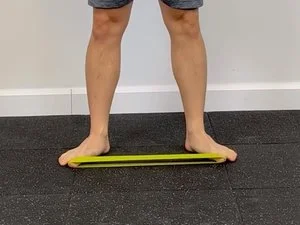
Wall lean banded toe raises
The ankle dorsiflexors are strengthened in this exercise. Start by leaning against a wall with your hips bent. Attach one end of a small band to the forefoot of one leg and anchor it with the other foot. Pull your foot into maximum range dorsiflexion (toes in front of the shins) and slowly return it to the ground.
Kettlebell toe raises
The ankle dorsiflexors are strengthened in this exercise. Begin by sitting on a bench and letting your foot hang over the edge. While wearing shoes, wrap the handle of a kettlebell around your foot. Dorsiflex the foot, bringing the toes toward the shins, and slowly allow the weight to pull your foot into plantar flexion.
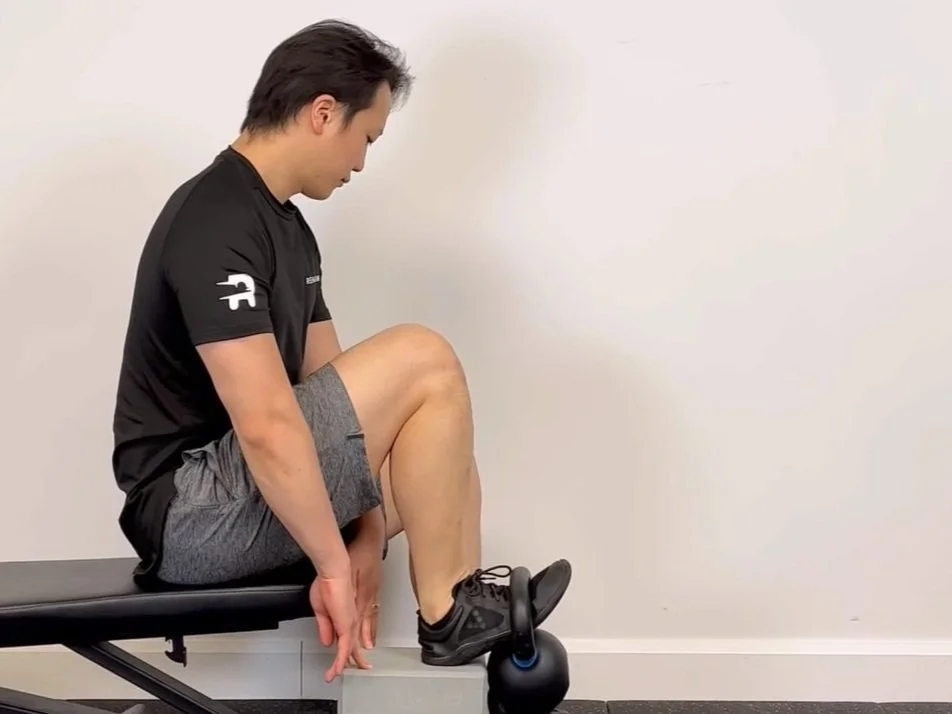
Heel walk
This is a lower leg dorsiflexor boosting exercise. To begin, stand on your heels by lifting the balls of your toes off the ground. Continue to walk advances 10-20 stages without permitting your forefoot to contact the ground. Throughout the entirety of this exercise, the foot should be fully dorsiflexed.
Dumbbell dorsiflexion
The ankle dorsiflexors are strengthened in this exercise. Sit on a bench with your feet hanging off the edge to get started. Put a dumbbell in the gap between your feet. Dorsiflex the foot, bringing the toes toward the shins, and slowly allow the weight to pull your foot into plantar flexion.
Slant board toe raises (knees bent)
The ankle dorsiflexors are strengthened in this exercise. Set up a slant board 4-6 inches from the wall to get started. Put the grade of the inclination board to around 30-40 degrees. With your knees bent and your pelvis supporting against the wall, stand on the slant board. Continue to raise your toes off of the inclination board to the furthest extent that you would be able and hold for as long as 5 seconds. To complete the exercise, slowly lower the forefoot back down to the surface of the slant board.
Plate-loaded toe raises
The ankle dorsiflexors are strengthened in this exercise. Begin by sitting down on a seat or seat and putting a weight plate on the highest point of your forefoot. To lift the weight plate, keep the heels planted and raise the toes off the ground. Keep this position at the top for 2-5 seconds. Gradually further the forefoot back down to bring down the weight place and complete a count.
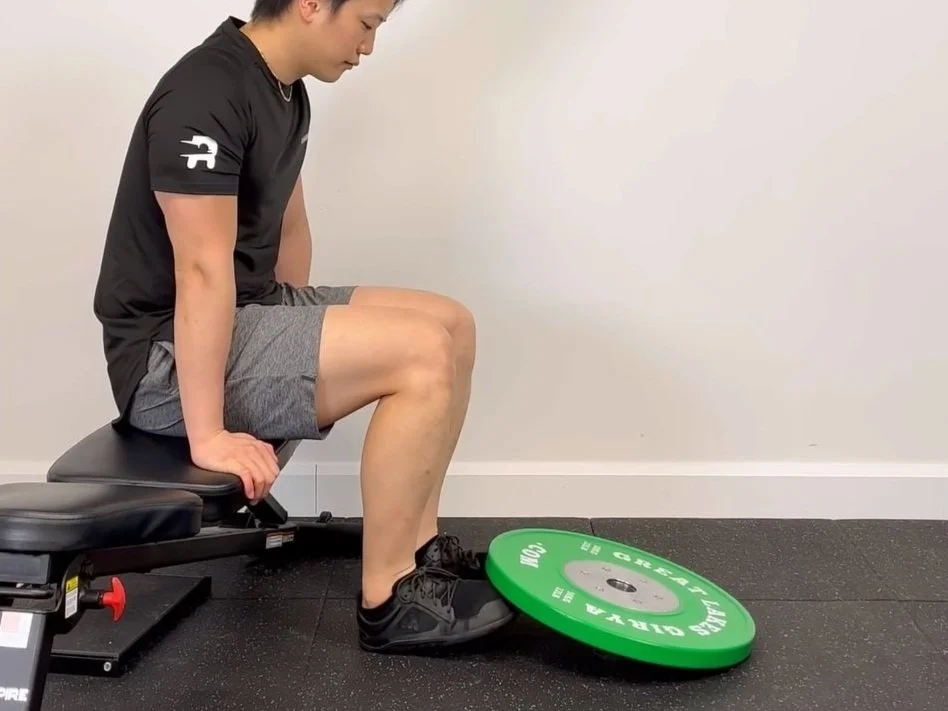
Kettlebell toe raises
The ankle dorsiflexors are strengthened in this exercise. To begin, sit down on a bench or chair and stack yoga blocks or weight plates to a height of about one foot. Put your heel on the elevated surface and insert your forefoot into a kettlebell handle loop with your forefoot. To raise the kettlebell, keep the heels planted and raise the forefoot. Keep this position at the top for 2-5 seconds. To lower the weight and complete a repetition, slowly lower the forefoot back down.
Tibbar raises
The ankle dorsiflexors are strengthened in this exercise. Take a seat on a bench with a TibBar set on the floor to get started. While your feet are hanging off the bench’s edge, place them through the foot handles. Pull the toes up and towards your shins and stand firm on this top footing for 2-5 seconds. To lower the weight and complete a repetition, slowly lower the forefoot back down.
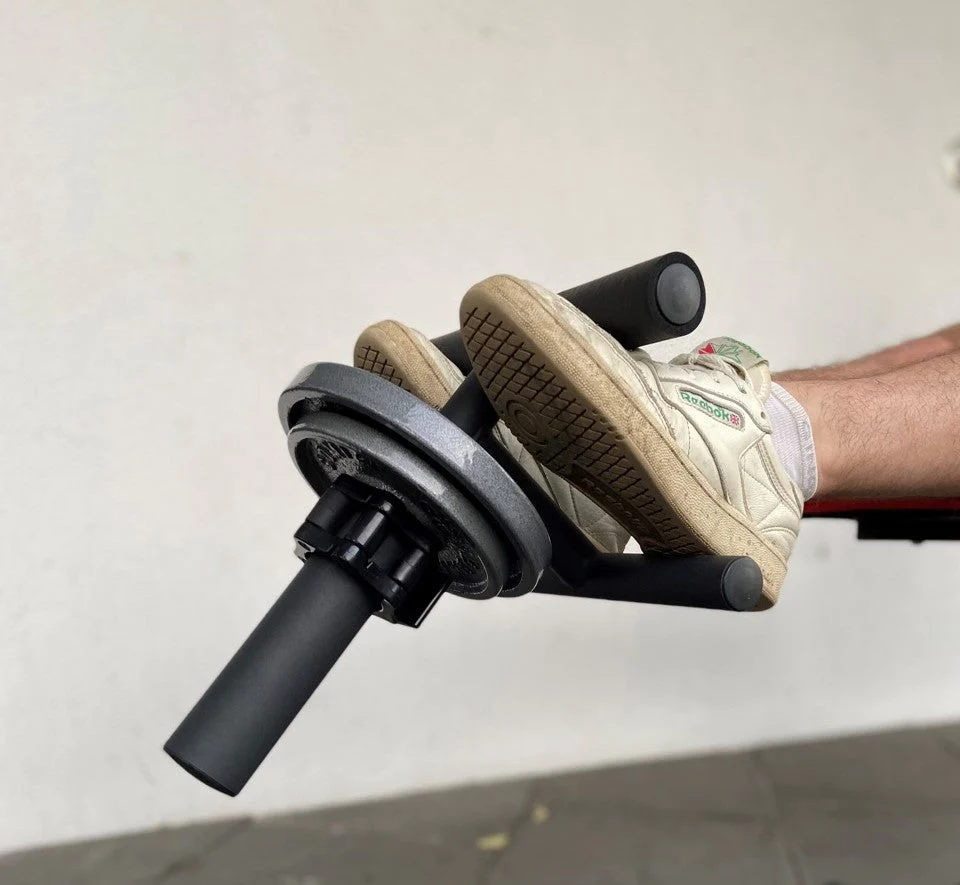
Banded gas pedal
Put your feet in a band and sit down. Expand the knees so it is straight before you. Engage your calf and shin muscles by alternately dorsiflexing and plantarflexing your ankles. With the calf supported by the floor, you can also perform this on the floor.
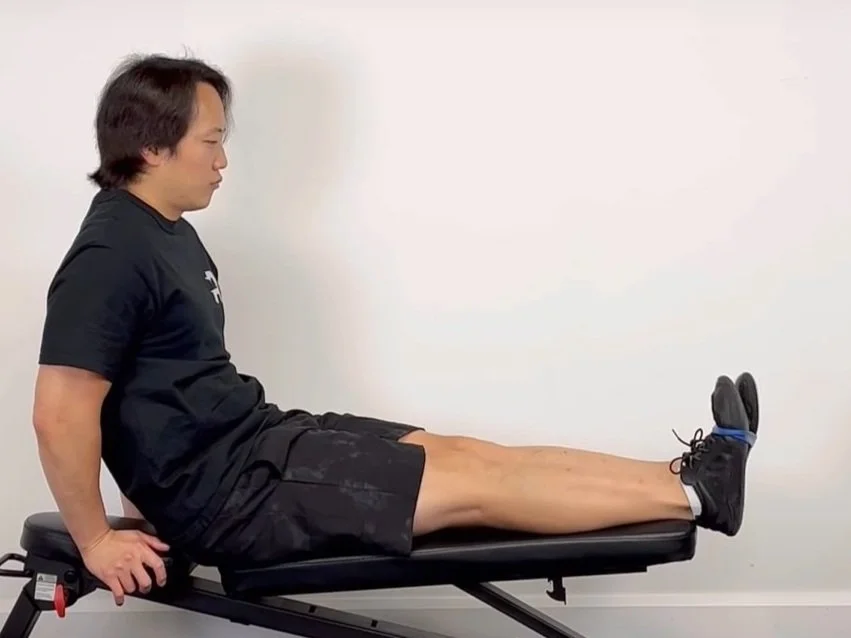
Dorsiflexion march
This is a lower leg dorsiflexor boosting exercise that is utilized in mix with hip flexor fortifying. Begin by circling a band around both of your forefeet. Maintain the maximum amount of ankle dorsiflexion while raising the hip into flexion. To keep your shin muscles contracted, bend your knee as needed.

Banded toe raises / Banded ankle dorsiflexion
The ankle dorsiflexors are strengthened in this exercise. Begin by circling a band around your forefoot with the opposite end moored to a steady item like a squat rack or couch. Pull your foot into maximum range dorsiflexion (toes in front of the shins) and gradually lower it back into plantar flexion (toes out of the shin).
FAQ
In the extensor hallucis longus, which nerve is damaged?
Motor weakness or absence can indicate weakness from the L5 nerve root or damage to the extensor hallucis longus (EHL) and muscles of the anterior compartment of the leg. Tendonitis and tendon rupture both involve the extensor hallucis longus.
How can extensor hallucis longus be treated?
Surgical repair is required to prevent deformity and gait disturbance, despite the fact that injuries to the extensor hallucis longus (EHL) tendon are uncommon. Acute conditions can be treated with primary suturing, but chronic conditions cannot.
What triggers pain in the extensor hallucis longus?
Repetitive actions that after some time cause disturbance in the ligaments and over-burden them with more weight or pressure are normally the main reason for extensor tendinitis. Working with your hands or feet, taking part in a game, or taking part in a standard action are the most widely recognized causes.
What signs does an extensor hallucis longus tear have?
Pain in the top of the foot is the most common symptom of extensor tendonitis in the foot. Typically, it is right next to your shoelaces. This pain may be felt while running or walking. There may be a noticeable enlargement or a knock on the injured or excited extensor ligament in some instances.
How can the extensor hallucis longus be relaxed?
Bend your foot so that the front of your foot is completely in contact with the ground and place one leg back. To increase the stretch, slowly press into it. Relax after about 30 seconds of holding. Make sure to do the other leg too.

